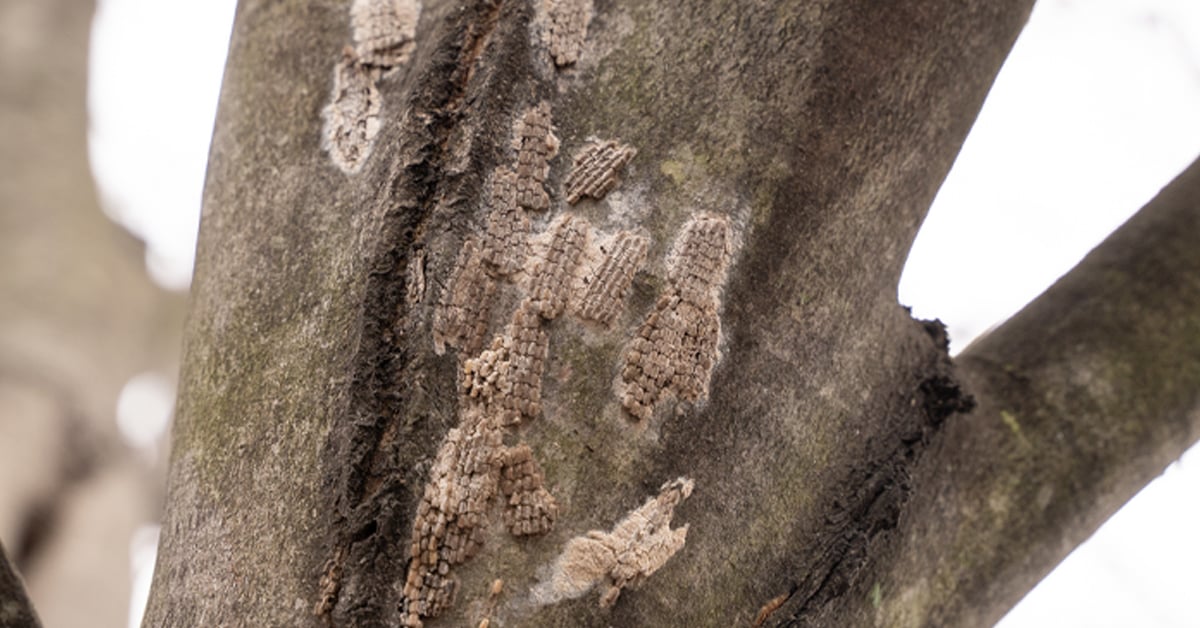
Plus, it's a rolling stone-it never stays in one spot for very long." "It has an insatiable appetite for the sap of more than 70 types of fruit and landscape trees, grapevines, and woody ornamental plants. The spotted lanternfly, he pointed out, feeds and moves continuously, especially during the nymphal stages. "These factors are favorable for an effective integrated pest management program."
SPOTTED LANTERN FLY TREE DAMAGE PLUS
"Most insect pests have a limited number of plants on which they feed, plus they tend to stay in one location," said Calvin, associate dean and director of special programs in the college. First discovered in Berks County, Pennsylvania, in 2014, it is now confirmed in 26 Pennsylvania counties and reported in surrounding states, including New Jersey, Delaware, West Virginia, Virginia, Connecticut, Ohio, New York, and Maryland. "Each exploration adds to our strategy in the fight against this destructive pest." A "Most Pernicious Insect"ĭennis Calvin has seen his fair share of destructive pests during his career as an extension entomologist-the first being the southwestern corn borer, which he researched as a graduate student at Kansas State University in the 1970s.īut when it comes to destruction, he said few insects have sucker-punched Pennsylvania quite like the spotted lanternfly, a planthopper native to parts of China, India, Vietnam, and eastern Asia. "Our research objectives regarding the spotted lanternfly are clear-to find sustainable, long-term solutions that are effective and environmentally safe," said Rick Roush, dean of the College of Agricultural Sciences. These projects run the gamut from basic biology of the pest and economic damage from feeding to its host-plant preferences and the efficacy of biological and chemical control methods. More than 25 College of Agricultural Sciences faculty, Penn State Extension educators, research technicians, and graduate students are dedicated to spotted lanternfly studies. Studies such as the one underway at Karamoor yield important insights into controlling the pest in vineyards, fruit farms, nurseries, homes, and recreational areas. "Penn State and its associates have done an awesome job of publishing their research findings and providing insight where there was once little information, which is why many people are becoming aware of the spotted lanternfly in general." "There was not much research done specifically on the spotted lanternfly before being introduced to Pennsylvania," Rienzi said. Besides advising on perimeter barriers and insecticide treatments that could hinder the pest's spread, Leach asked if the vineyard could serve as a research site. Rienzi said they saw slightly lower Brix levels (sugar content) in some of the grapes, and they also noticed nutrient deficiencies, specifically potassium, in the vines.įor advice, they turned to Heather Leach, who at the time, was the spotted lanternfly extension associate in Penn State's College of Agricultural Sciences.

Of equal concern is how spotted lanternfly feeding on the grapevines affected the quality of the fruit harvested. "We started the 2020 season with lower initial crop potential due to the bud death on the heavily fed vines, which reduced our crop this year." "We began to notice vines that were damaged from large numbers of spotted lanternflies feeding on them the previous season," said Joseph Rienzi, the estate's viticulturist. Spotted lanternflies that once stayed on trees at the edge of the property spilled into the vineyard, leading owners and staff to engage in an unremitting battle to keep the insects at bay. What started as a trickle in 2018 turned into a steady stream the following year. Staff had been on high alert, keeping a lookout for this pest in years past, but the insect never seemed to create any problems.


In the spring of 2018, the staff at Karamoor Estate Vineyard and Winery in Fort Washington, Pennsylvania, noticed a small gathering of spotted lanternfly nymphs coming together on a sycamore tree bordering the 200-acre estate.


 0 kommentar(er)
0 kommentar(er)
